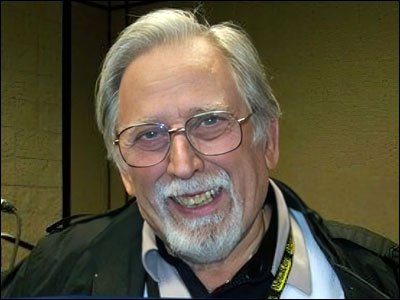
Sad to report the passing of longtime editor-artist Dick Giordano.
Dick was born July 20, 1932 in New York and launched his career in comics in 1952, drawing for Charlton Comics. He was not only a very good artist — one they quickly assigned to handle many of their covers — but an industrious one, as well. He quickly got a reputation as a guy who never said no to any assignment; who'd work day and night to get anything and everything done. So not only did he do all his own work but he was constantly helping other artists, pitching in on their work. Even when he rose to the post of editor-in-chief at Charlton (which occurred in '65), his art appeared in the books of other companies. There were several artists whose reputations were built at least in part on the quality and efficiency of artwork that was actually ghosted by Giordano.
When he took over as editor at Charlton, Dick was charged with revamping the line to try and compete with the Marvel boom of the sixties. Aided by the presence of Steve Ditko in his freelance pool, Dick launched a line of "action heroes" (Blue Beetle, a revival of Captain Atom, etc.) that won great critical acclaim but, apparently, insufficient sales. He replaced them with a line of ghost-oriented comics that were much more successful and continued long after Dick left Charlton for an editorial post at DC Comics in 1967. It has usually been reported that DC hired him and he brought over Ditko as well as a number of new folks (like Jim Aparo and Steve Skeates) he'd "discovered" at Charlton. Actually, Ditko preceded Giordano to DC. In fact, it was partly through a recommendation from Ditko that Carmine Infantino Irwin Donenfeld at DC hired Dick. [Correction.]
As was the case at Charlton, Giordano proved to be an exceptional editor. He was good at finding talent, good at leaving it alone to do what it did best, good at stepping in when necessary. Writers and artists generally liked working with Dick. Most found him honest, helpful and willing to gamble on new things. Alas, his first stint at DC did not last long. He was assigned a slate of comics that were either brand-new or failing at a time when just about everything that was brand-new or failing there failed. He openly clashed with Infantino on company policies and in 1971, chose to go elsewhere.
He and artist Neal Adams founded Continuity Associates, a firm which supplied artwork to many publishers, DC included, and commercial enterprises. An amazing number of artists who would later become prominent in comics got either their first jobs or their first breaks by working at Continuity, including Terry Austin, Joe Rubenstein and Al Milgrom. A major part of the Giordano legacy is the number of artists and writers who broke into the field because of him, either at Continuity or at Charlton or his two tours-of-duty at DC.
His second DC period began in 1980, several years after Infantino's departure. Eventually, it led to Dick becoming Vice President/Executive Editor, a post he held until 1993. I worked with him a number of times and though we had our differences, he was usually a joy. He could manage without micro-managing and he was often capable of saying, as some in that kind of job are not, that the company was wrong and the freelancer was right. That was not always the case but it was true often enough that most of us were willing to forgive him when he didn't act like…well, didn't act like Dick Giordano.
That was the main point I want to make here about Dick. I got into comics around 1970 and so was witness to a major sea change in how the industry treated its talent. I saw publishers gain a new, hitherto-denied respect for the men and women who fill the pages and a diminution of the "plantation" mentality that existed for too long. It was not just that pay scales got better and they began doing things like returning original art and standardizing credit policies. It was that they talked to you like partners, not pieceworkers, and recognized the unique contribution that each person could make. Dick was by no means the only reason that change came about but he was an important one.
When he retired from his executive position at DC, he returned to his first love, the drawing of comics. He was very good at it. He was also a very fine inker of other artists' work and many asked for him to be assigned to their projects. In 2003, he collaborated with author Michael Eury on an autobiography, Dick Giordano: Changing Comics, One Day at a Time, which is a good overview not only of his career but of the changes in the industry during that period.
On a personal note: I really liked Dick. I liked reading comics he worked on. I liked working with him, liked seeing how much of a difference he made in so many lives. It was generally a positive one. He was a devout fan of comics in the best possible way and one time when he and I had a very brutal argument over a certain DC policy, we followed it with an utterly-friendly discussion of comic artists we both admired. It was that passion for the field and that enthusiasm for the talents of others than made him a very fine editor and a very fine gentleman. Comics already miss him…a lot.